Constantine first started to build this church in the 4th century AD atop the traditional site of Paul’s grave, in order to commemorate his martyrdom. Valentinian II and Theodosius the Great dismantled Constantine’s shrine and constructed a basilica instead, which stood at this location until the early 19th century.
Church of St. Paul Outside the Walls
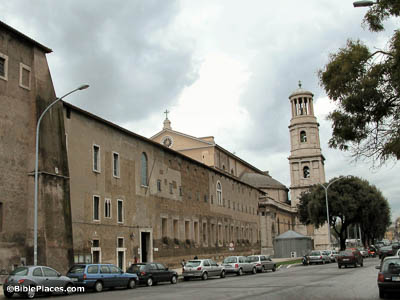
Early History
Courtyard
An atrium of four porticoes surrounding a courtyard with a statue of St. Paul precedes the church. What can be seen today is not from the original building, as an 1823 fire (caused most likely by a careless workman) destroyed most of the church. It was soon rebuilt with new materials following the original plan and dimensions, funded by contributions from dignitaries throughout the world.
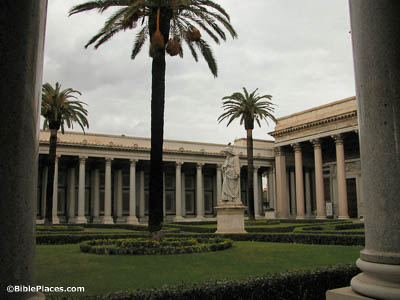
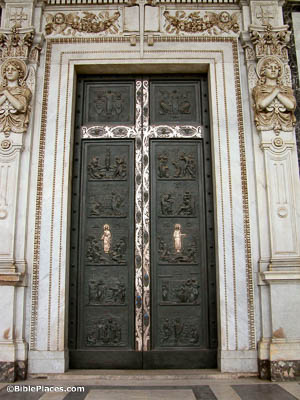
Front Door
The main door of St. Paul’s is made of bronze with silver inlays. A gift from Antonio Maraini in 1928–1931, it portrays scenes from the lives, ministries, and martyrdoms of Peter and Paul. The highlighted figures near the middle of the door are representations of Jesus. On the left he is shown giving Peter the keys of the kingdom, and on the right he is shown confronting Saul.
Nave
Though the 1823 fire destroyed most of the original church, certain parts of the earlier structure do remain, including the mosaics on the triumphal arch (seen here at the very end of the nave, supported by two Ionic pillars) dating to Pope Leo the Great of the 5th century. Pictured on the arch are Christ, two angels, the four Evangelists, and the 24 Elders mentioned in Revelation.
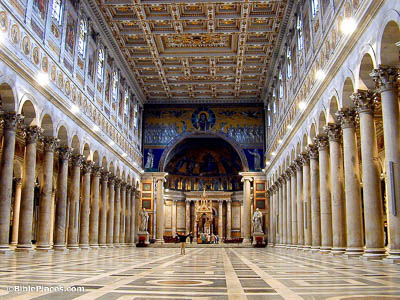
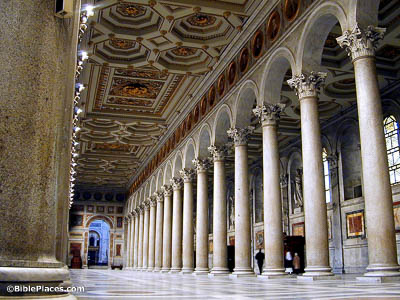
Columned Aisle
The basilica itself is 420 feet (128 m) long, 210 feet (64 m) wide, and 100 feet (30 m) high. Eighty columns line the nave of the church on both sides. The Church of St. Paul is the largest church in Rome after St. Peter’s.
Altar
This holy altar, built by Pope Clement VII in 1600, is reserved for the Pope and those to whom he gives permission to occupy it during Mass. It is believed to be situated just above St. Paul’s tomb. The church also boasts a relic that was allegedly the chain used to bind Paul before his execution.
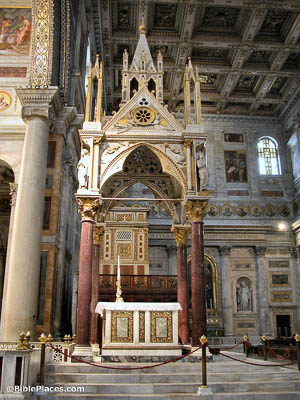
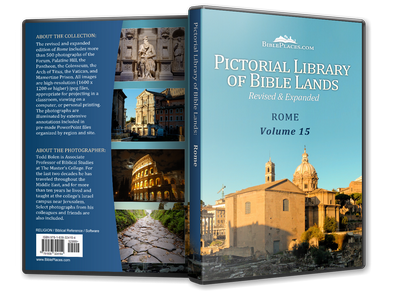
Download all of our Rome photos!
$24.00 $29.99 FREE SHIPPING
Related Websites
See also Tarsus and Antioch on the Orontes. For historical images of Damascus, see Life in the Holy Land.
Ancient History of St. Paul Outside the Walls (Encyclopedia Britannica) A very brief video explaining the church’s tradition and history.
St. Paul Outside the Walls (Vatican.va) A virtual tour of the site; incredible photographs.
Basilica Papale Di San Paolo Fuori Le Mura (official site) A great place for all information related to this church.
Basilica of St. Paul Outside the Walls (personal page) This page gives a nice tour of the church, including photos and fairly detailed information about the mosaics.
The Triumphal Arch at St. Paul’s Outside the Walls (Christian Iconography) This includes a photo and a brief paragraph about one particular area in the church. A few more images are visible here, including more of what is visible in the apse.